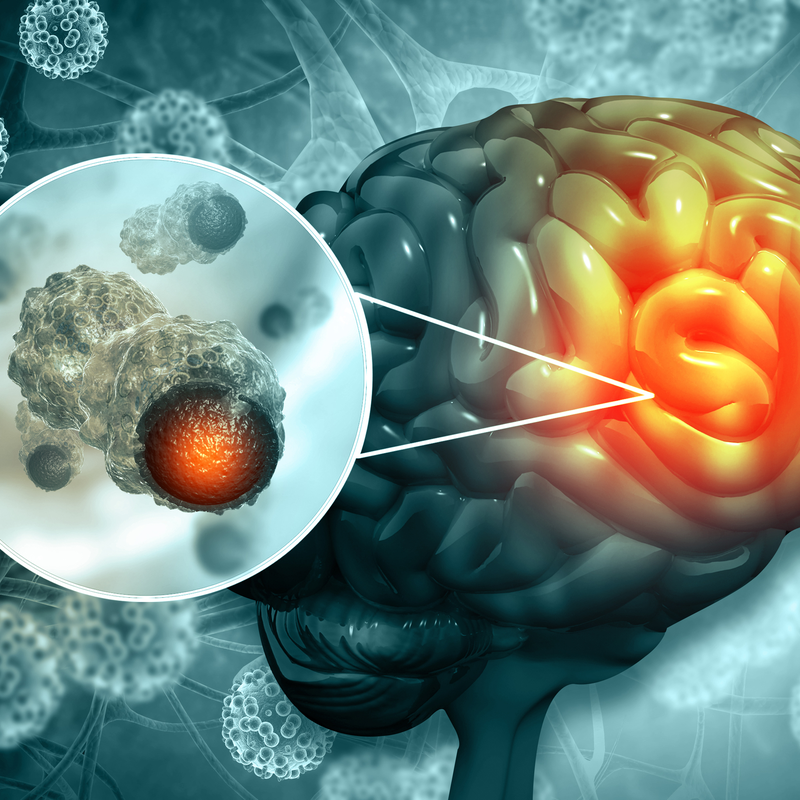
What are benign meningiomas?
The term benign meningiomas refers to benign brain tumours that affect the hard meninges. Benign meningiomas develop from the covering cells of the soft meninges and form mainly in adulthood. Women from the 5th decade of life are disproportionately affected by the disease. The disease affects women about twice as often as men, but rarely occurs before the age of 40.
Almost 25 percent of all tumours of the central nervous system are benign meningiomas, which usually occur in isolated cases. In contrast to malignant meningiomas, benign meningiomas are sharply defined and do not grow into the adjacent brain tissue. Depending on the severity of the tumour and the type of treatment, the chances of recovery are good or poor. In any case, after surgical removal of the tumour, rehabilitation is recommended.
What types of benign meningiomas are distinguished?
The World Health Organisation (WHO) distinguishes between the following two grades with regard to benign meningiomas:
- WHO grade I: Meningioma account for more than 85 percent of all benign meningiomas, which can usually be removed completely by surgery and have a favourable prognosis
- WHO grade II: Atypical men ingioma account for about 10 per cent of all benign meningiomas, which have an increased growth potential and have a high recurrence rate even after successful complete removal of the tumour. An atypical meningioma should therefore be monitored regularly after surgery .
The third WHO grade
is an anaplastic meningioma, which occurs rather rarely
and describes a malignant tumour of the meninges. The
classification of the tumour in this scheme is important both for the treatment as
well as for the prognosis prospects.
What causes a meningioma to form?
A meningioma is caused by the degeneration of a certain type of cell . The exact reasons for this degeneration are still unclear, but doctors believe that a genetic predisposition could contribute to the development of the meningioma. Another risk factor is ionising radiation, which is why children who have been treated with radiation therapy for cancer are more prone to developing meningiomas.
What symptoms can a benign meningioma cause?
Since most benign meningiomas grow rather slowly, the disease can run without symptoms for some time. Only in the late course of the disease can symptoms such as headaches or worse still seizures occur. The symptoms can be explained by the fact that the tumour, which has become quite large, presses on other brain regions or nerve structures. In addition to the two symptoms already mentioned , the following other rather unspecific complaints can be triggered:
- Dizziness,
- Paralysis,
- Loss of sense of smell
- Vomiting,
- Visual disturbances up to paralysis of the eye muscle,
- Respiratory and/or consciousness disorders,
- Increase in blood pressure with a simultaneous drop in heart rate,
- Pain and/or sensory disturbances,
- Gait disturbances
- Discomfort when going to the toilet
The
different symptoms depend in their appearance and intensity
on which region of the brain the tumour is pressing on.
How is a benign meningioma diagnosed?
If the tumour is asymptomatic, it is usually discovered by chance . This can be done, for example, by the usual tests. This can be the case, for example, with the usual imaging procedures of a computer tomography (CT) or a magnetic resonance imaging (MRI). Furthermore, a blood flow measurement of the brain can be carried out and a tissue sample of the tumour (biopsy) can be taken. As a rule, meningiomas take on a flat or nodular shape and are usually located in the skull . Less than ten per cent of all brain tumours grow in the spinal canal or on the HIrnhaut of the spinal cord.
How is a benign meningioma treated?
If the disease is symptom-free, no treatment is necessary at first . The same is true if the tumour is symptom-free. The same applies to asymptomatic small meningiomas, which should only be examined at regular intervals by means of a CT scan or an MRI scan. However, if the benign meningioma causes symptoms, an attempt should usually be made to remove the tumour by surgery. In the case of a tumour that has a severity grade of I according to the WHO, complete surgical removal is usually possible without any problems . If the tumour has a lot of blood vessels, , the blood vessels are closed by means of a so-called embolisation , which prevents excessive blood loss. In case the meningioma cannot be completely removed surgically, the remaining tumour cells are destroyed after the operation by means of radiation therapy.
What is the prognosis for benign meningioma?
The prognosis for a complete cure always depends on the severity of the disease. With a tumour of the first severity, the prospects are good that the tumour can be completely removed, which also increases the chances of a complete cure. A meningioma of the II type carries the risk that the tumour will grow back after some time, even after successful surgery , and that another operation will be necessary. A malignant type III brain tumour is dangerous because it can metastasise and has very little chance of being cured. The general 5-year survival rate with a menigeoma is about 90 percent. However, regardless of whether the chances of cure are good or bad, rehab should always follow treatment of the meningioma.
What does rehab for meningioma look like?
The rehabilitation after a meningioma can either be done as an outpatient or as a partial or full inpatient. Normally, patients should attend neurological rehabilitation at after the operation for benign meningioma. The focus here is on the impairments caused by the brain tumour. These may include, for example, mental deficits, motor impairments, disturbances of the sense of balance or speech, and even signs of paralysis .
